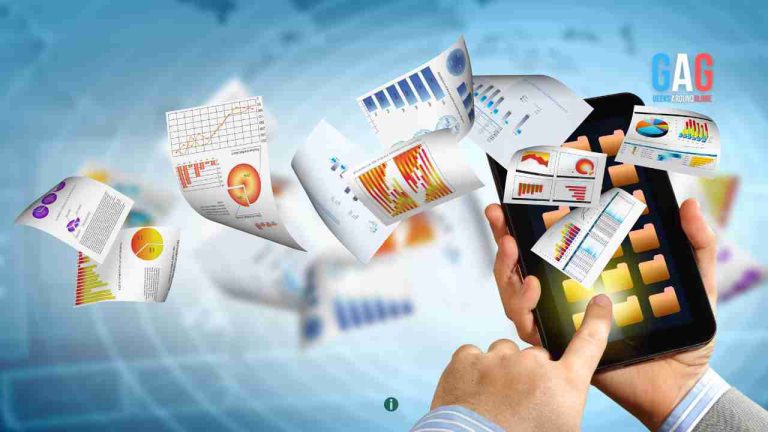
E-commerce has transformed several industries in recent years, and the electronics industry is no different. The convenience, accessibility, and expanding customer base offered by online platforms have significantly transformed the distribution of electronic goods.
Direct-to-consumer approaches are also becoming increasingly popular, and this trend toward online shopping has compelled industry players to innovate and adapt consistently. This article examines the profound impact of e-commerce on electronic manufacturers, exploring its implications for traditional retailers, manufacturers, and consumers.
Some Prominent Effects Of E-Commerce On Electronics Distribution:
Now, let us explain these eCommerce effects in detail so that you can clearly understand them for electronic distribution.
- Consumer Behavior Change:
Consumer behavior in the electronics sector has changed as a result of e-commerce. They may browse various products, compare prices, read reviews, and make purchases from the convenience of their homes with just a few clicks.
This convenience and ease of access have also led to a surge in online sales, attracting a growing number of tech-savvy consumers.
- Disintermediation and Direct-to-Consumer Model:
E-commerce has enabled electronics manufacturers to bypass traditional distribution channels and establish a direct relationship with consumers. This direct-to-consumer model gives manufacturers better control over pricing, product information, and customer data.
Additionally, it enables them to gather valuable insights about consumer preferences, which can be utilized for product development and marketing strategies.
- Challenges for Traditional Retailers:
The rapid growth of e-commerce has posed significant challenges for traditional electronics retailers. As consumers increasingly shift their purchasing habits online, physical stores face the risk of declining foot traffic and sales. Many retailers have embraced omnichannel strategies to adapt, integrating online platforms into their operations.
They have also invested in enhancing the in-store experience by providing personalized services, interactive displays, and exclusive events. However, the online competition remains fierce, requiring traditional retailers to innovate continuously to stay relevant.
- Logistics and Supply Chain Evolution:
The expansion of e-commerce has brought about substantial changes in logistics and supply chain management for electronics distribution. Efficient warehousing, order fulfillment, and last-mile delivery have become crucial to successful e-commerce operations.
Companies have optimized their logistics networks to meet online customers’ demands, implementing advanced inventory management systems, automated warehouses, and strategic partnerships with logistics providers.
- Enhanced Consumer Experience:
E-commerce has revolutionized the consumer experience in electronics distribution. Online platforms offer extensive product information, user reviews, and comparisons, empowering consumers to make informed decisions. Personalized recommendations based on browsing and purchase history enhance the shopping experience.
With easy access to various products and competitive pricing, customers can also enjoy greater choices and often find better deals online. Moreover, the convenience of doorstep delivery and hassle-free return policies has further elevated the overall satisfaction of online shoppers.
- Global Reach and Market Expansion:
E-commerce has facilitated the expansion of electronics distribution on a global scale. Online platforms also allow manufacturers and retailers to reach customers beyond their local markets, enabling them to tap into new customer bases and expand their business presence internationally.
This globalization of electronics distribution has opened up new revenue streams and increased market competitiveness.
- Increased Price Competition and Transparency:
E-commerce has intensified price competition in the electronics industry. Customers can use online platforms to compare costs from various sellers, allowing them to find the greatest offers and discounts.
Moreover, this transparency has compelled retailers to offer competitive pricing strategies, promotional campaigns, and value-added services to attract and retain customers. The ease of price comparison has also pushed manufacturers to optimize their production costs to maintain competitive pricing in the online marketplace.
- The Emergence of Online Marketplaces:
Online marketplaces have also played a significant role in the distribution of electronic products. Platforms like Amazon, eBay, and Alibaba have become popular destinations for consumers and sellers.
These marketplaces provide a wide selection of electronics products from various brands and sellers, offering consumers a one-stop shopping experience. They also offer fulfillment services, customer reviews, and seller ratings, enhancing trust and convenience in online purchasing.
- Impact on Physical Store Formats:
The growth of e-commerce has prompted changes in physical store formats in the electronics industry. Traditional retailers have adapted by embracing concepts such as showrooming and displaying products in-store while encouraging customers to purchase online.
This approach allows retailers to reduce inventory and operational costs while leveraging the advantages of online sales channels. The convenience of online shopping and the speed of in-store fulfillment is combined with some retailers’ click-and-collect services, which let customers order online and pick up their items at a local location.
- After-Sales Service and Customer Support:
E-commerce has redefined after-sales service and customer support in electronics distribution. Online platforms provide multiple channels for customers to seek assistance, including live chat, email, and dedicated customer service hotlines. This accessibility allows customers to receive timely support, product troubleshooting, and warranty services.
In addition, e-commerce platforms facilitate the management of product returns and exchanges, streamlining the process and ensuring a positive customer experience.
- Digital Marketing and Targeted Advertising:
It has revolutionized how electronic products are marketed and promoted. Online platforms also collect vast consumer data, allowing manufacturers and retailers to target specific demographics and personalize their marketing campaigns.
This targeted advertising enables them to create relevant and tailored messages that resonate with their audience, resulting in higher conversion rates and customer acquisition.
- Product Innovation and Rapid Iteration:
E-commerce has accelerated the pace of product innovation and iteration in the electronics industry. Online platforms provide a direct line of communication between manufacturers and consumers, enabling real-time feedback and insights. This feedback loop also allows manufacturers to gather valuable data on customer preferences, pain points, and emerging trends, which can inform the development of new products and features.
Additionally, the shorter product development cycles facilitated by e-commerce enable manufacturers to introduce updates and improvements more frequently, keeping up with the rapidly evolving technology landscape and consumer demands.
Summing Up!
One can’t overestimate the influence of e-commerce on the distribution of electronics. Consumer experience has been enhanced, established retailers have been put to the test, and supply chains have been streamlined. For China distributor electronics manufacturers, retailers, and logistics providers to succeed in the changing e-commerce landscape as technology and consumer expectations change, they must adopt digital strategies, make the most of data insights, and provide excellent customer experiences.
Also Read : Oxford Academic







